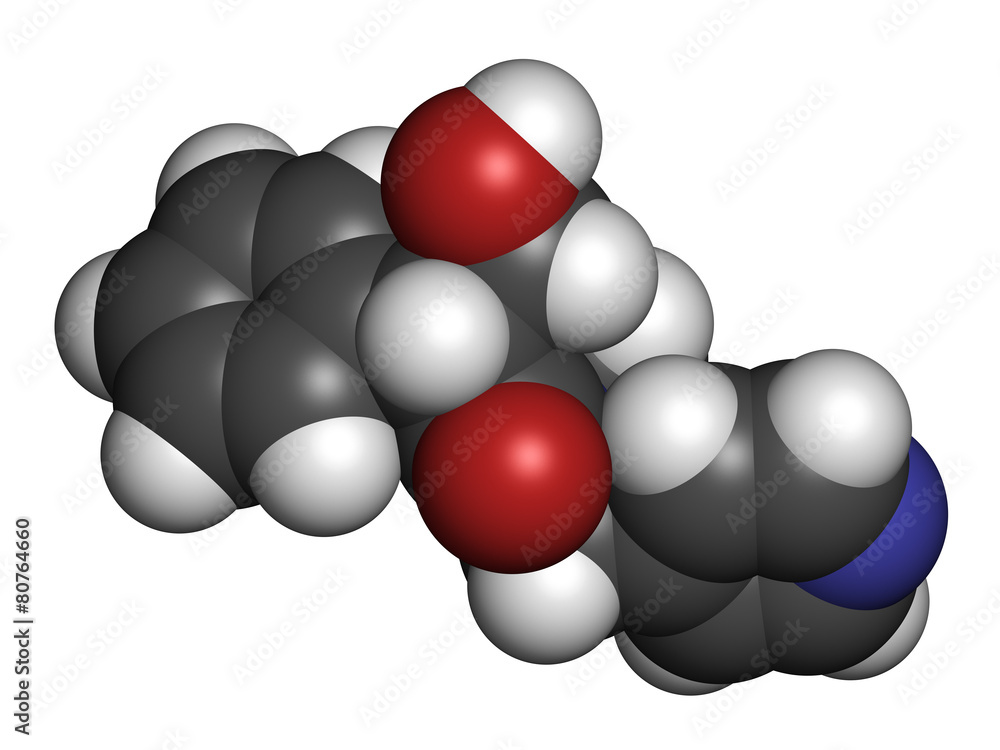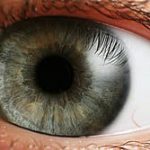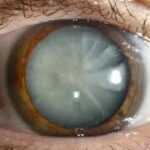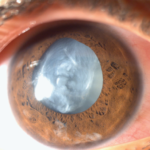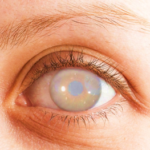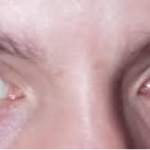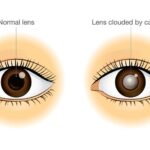Introduction:
The term mydriatic refers to a group of drugs that cause dilation of the pupils. The induction of the dilation of the pupil is commonly used to allow for a more in-depth examination of the retina during eye exams. This dilation is also critical during procedures
such as cataract surgery to allow easy access to the inner eye. Mydriatics are drugs that cause the dilation of the pupil. Pupillary dilation is needed to allow for a more detailed examination of the inner eye. Dilating is also necessary in procedures, such as surgery to correct cataracts, in order for the surgeon to have access to the inner eye. Without mydriatic agents, the pupil of the eye typically only dilates in dark environments to allow for more light to the eye and vision adjustment to the dark. In bright light environments, such as direct sunlight, the pupil normally constricts or shrinks to protect the retina.
Disease, trauma, and the use of some drugs can cause mydriasis even in bright environments, which can be damaging to the retina. For this reason,
when your doctor uses mydriatic agents, they will typically keep the room dark and ask you to bring sunglasses to your appointment to wear afterward until the effects of the drug wear off. There are many different types of drugs that may cause mydriasis, or pupillary dilation. Some are used with the intent to cause mydriasis for a medical purpose, while with others, mydriasis is an unintended side effect of their use. Only a healthcare professional can determine if the use of a mydriatic agent is needed for your condition.
Mydriatic and cycloplegic agents can be used for diagnostic and therapeutic purposes. Mydriatics dilate the pupil, and cycloplegic agents additionally paralyze the ciliary muscle (preventing accommodation). Dilating the pupil is necessary for adequate examination of the internal ocular structures. Topical mydriatics are used during an eye examination to allow visualization of the retina and other structures deep within the eye. Mydriatics may also be used to treat inflammatory eye conditions such as iritis and cyclitis and to reduce cycloplegia (a painful paralysis of the ciliary muscle of the eye).
Mydriatics, such as tropicamide, relax the iris sphincter which is innervated by the parasympathetic nervous system. Other mydriatics, such as phenylephrine, dilate the iris through stimulation of alpha adrenoreceptors which are part
of the sympathetic nervous system.
How mydriatics works?
Mydriatics are ophthalmic medications that are used to dilate the pupil (mydriasis). Each cycloplegic/mydriatic drug works in a different way to
maintain dilation in the pupil for a specified period. Mydriatics work in the following ways to achieve mydriasis:
Paralyze the ciliary muscle (cycloplegia), which adjusts the lens shape and thickness to enable us to focus on near and far objects. The ability to focus at different distances is known as eye accommodation.
Paralyze the sphincter muscle which encircles the pupil and helps contract the pupil in bright light. Activate contraction of the dilator (radial) muscle of the iris which dilates the pupil.
Some mydriatics are anticholinergic. Ophthalmic anticholinergics block the activity of acetylcholine, a substance that activates the contraction of ciliary and sphincter muscles inside the eye, resulting in temporary paralysis of those muscles.
Some mydriatics are anticholinergic. Ophthalmic anticholinergics block the activity of acetylcholine, a substance that activates the
contraction of ciliary and sphincter muscles inside the eye, resulting in temporary paralysis of those muscles. Acetylcholine is a
neurotransmitter that motor nerve cells (neurons) in neuromuscular junctions release to activate muscles.
Other cycloplegics/mydriatics are alpha agonists that stimulate alpha adrenergic receptors and cause contraction of dilator muscles of the iris and constriction of blood vessels. Alpha adrenergic receptors are proteins that make smooth muscles contract in response to hormones (catecholamines) epinephrine and norepinephrine released by the adrenal gland.
Cycloplegics/mydriatics are often administered as combination drugs to achieve dilation of the pupil. Cycloplegic/mydriatic medications may be combined
with an ophthalmic non-steroidal anti-inflammatory drug (NSAID) to prevent pain and inflammation from eye surgery.
How are used?
Mydriatics are ophthalmic solutions or ointments topically administered in the eye. Mydriatics are used for the following purposes:
Dilation of the pupils for diagnostic or surgical procedures
Treatment of eye redness
As part of the treatment for uveitis (inflammation of uvea, the middle layer of the eye)
Relieve pain by preventing movement of the iris
Prevent the iris from adhering to the lens (posterior synechiae)
Prevent further flare-up of uveitis
Cataract and intraocular lens replacement surgery Side effects of Mydriatics: Ocular side effects of Mydriatics are:
Irritation and foreign body sensation
Stinging or burning sensation in the eye
Blurred vision
Sensitivity to light
Hyperemia (dilation of blood vessels)
Dry eyes
Vascular congestion (congestion in the eye’s blood vessels)
Fluid leakage (exudate) from capillaries
Eye edema
Allergic conjunctivitis (inflammation of the conjunctiva, the clear membrane that covers the eye and the inner surface or the eyelids)
Follicular conjunctivitis (collection of lymphocytes [follicles] in the conjunctiva)
Increased intraocular pressure
Inflammation in the cornea (keratitis)
Anticholinergic toxicity
Rebound myosis (constriction of the pupils)
Reactive hyperemia
Corneal abrasions
Anterior chamber inflammation (inflammation of uvea, iris and ciliary muscle, also known as anterior uveitis)
Posterior capsule opacification (opacity of the posterior side of the clear membrane that encapsulates the lens)
Systemic side effects of Mydriatics:
The following are the systemic side effects of Mydriatics:
Headache or brow ache
Dermatitis
Drowsiness
Hyper reactive response in children with Down’s
syndrome
Dry mouth
Nausea
Vomiting
Allergic reactions
Muscle rigidity
Fainting (syncope)
Stimulation of parasympathetic nervous system

